In Maps: China’s Military Activity in the Indo-PacificChina is expanding its military operations and infrastructure throughout the Indo-Pacific region.
Illustration by The Epoch Times
By Andrew Thornebrooke
|
September 06, 2025Updated:September 06, 2025
China is expanding its military reach throughout the Indo-Pacific, challenging U.S.-led security that has dominated global sea lanes for decades.
The Chinese Communist Party (CCP) is building bases, securing military port access in foreign nations, and deepening naval partnerships across multiple regions. The regime’s People’s Liberation Army (PLA), is likewise conducting military drills thousands of miles from China.
The increasing ambition demonstrated by the CCP poses a challenge to international policymakers, who are striving to contain China and its military coercion.
Here’s a look at how the CCP is expanding its military footprint across the Indo-Pacific.Crossing the Median Line
The CCP’s push to expand its military presence throughout the seas begins close to home, in the Taiwan Strait.
Chinese regime officials have claimed for decades that the territory of Taiwan is part of the mainland, though the CCP has never controlled any part of Taiwan. Beijing has ramped up its rhetoric and military maneuvers in recent years to suggest an increased willingness to intimidate and possibly invade the independent island and its surrounding territories.
One key metric of this aggression is Chinese crossings of the so-called median line, a boundary drawn roughly down the middle of the strait between China and Taiwan.
The median line is a nonbinding boundary originally conceived by the U.S. military in the 1950s. Beijing has never officially recognized its existence, but historically, the CCP’s willingness to send sorties over the line has underscored its efforts to challenge the international order.
From 2021 to 2024, PLA units more than tripled their crossings of the median line from 953 incidents to 3,070, the The Jamestown Foundation think tank said in a January report. The regime conducted such missions on 313 days last year, accounting for roughly 60 percent of all its aerial missions.
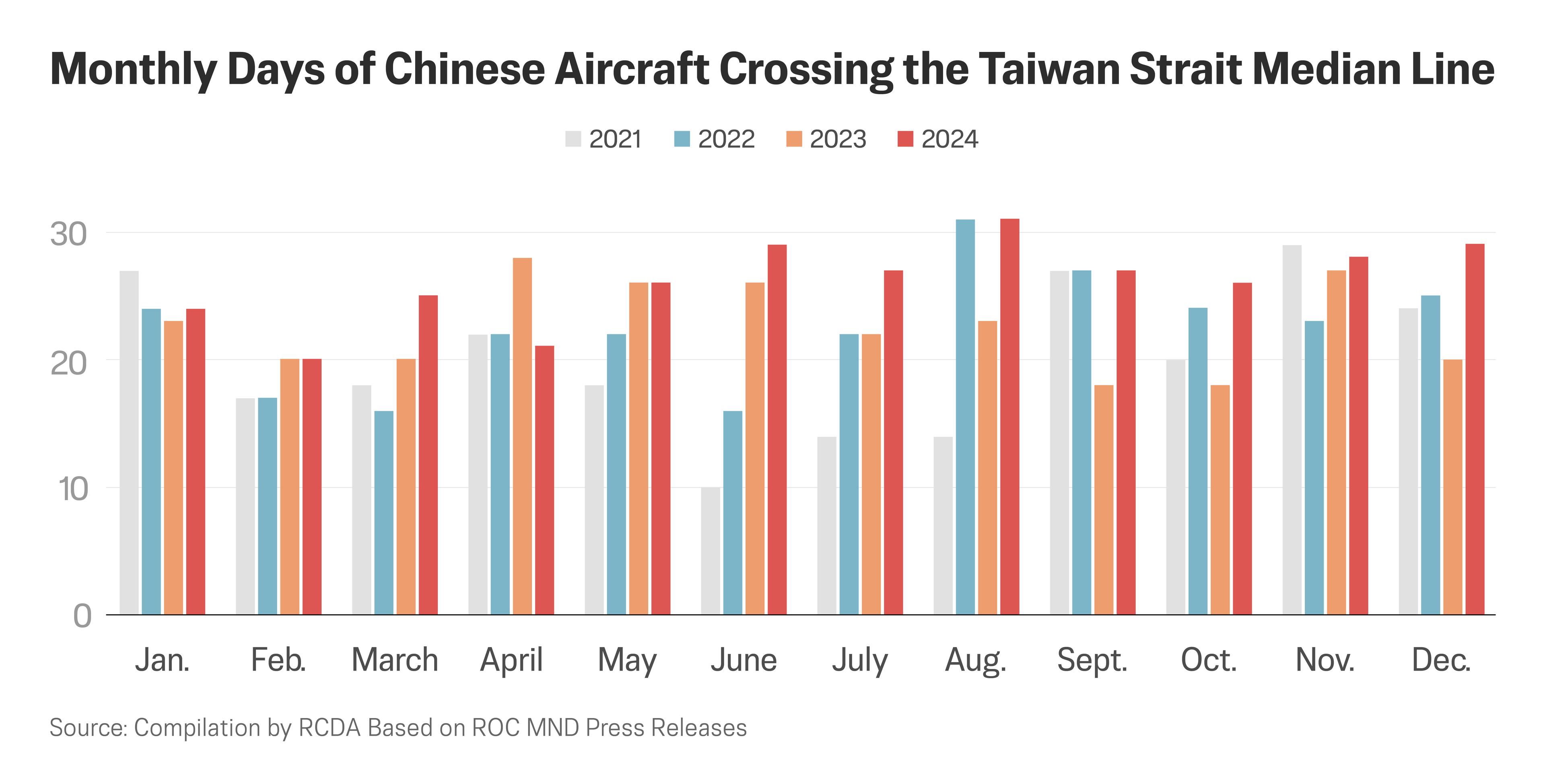
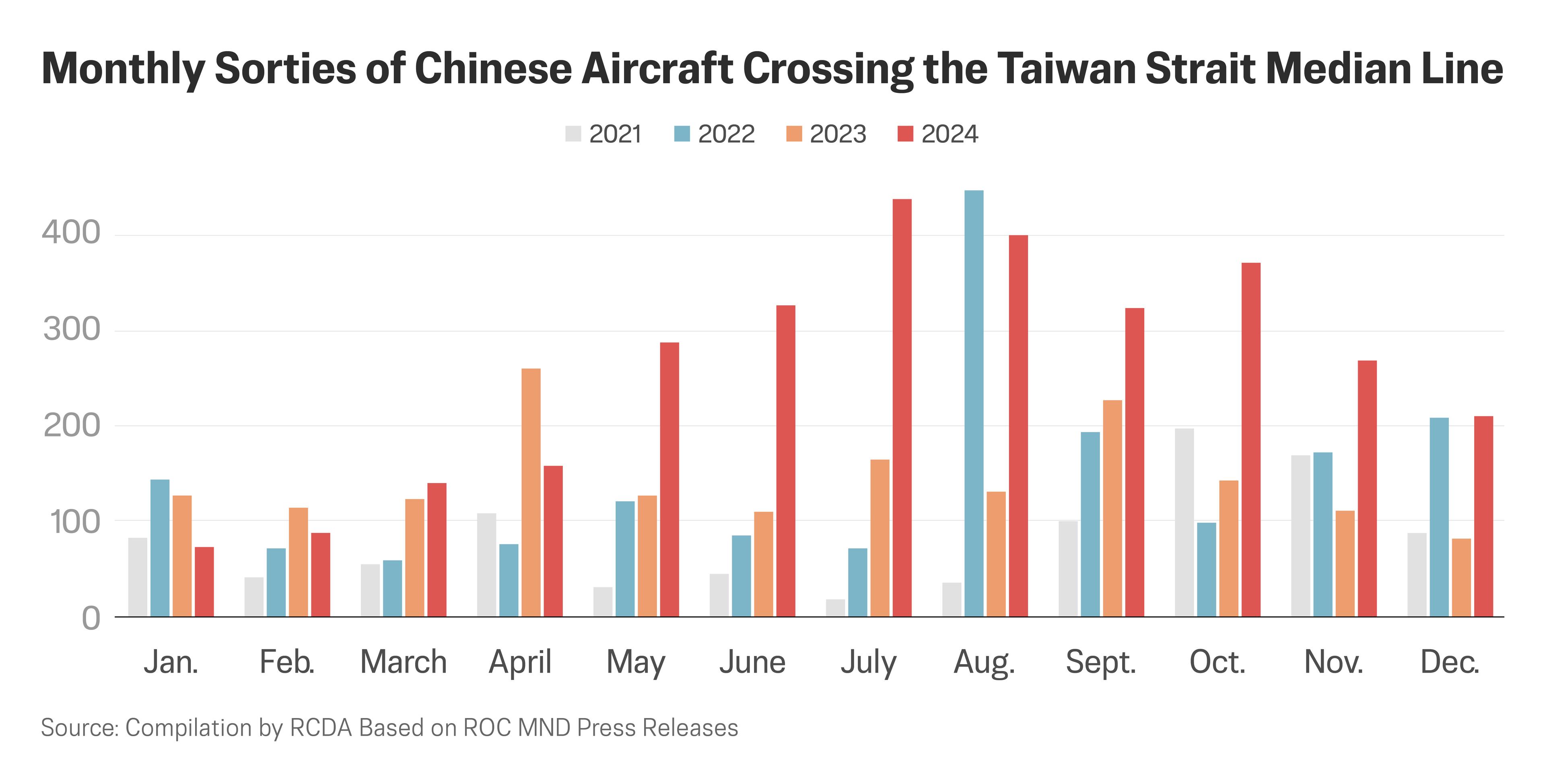
The push to erase the median line violates a long-standing tacit boundary and serves to put pressure on the Taiwanese military by reducing response times for Taiwan’s air defenses, according to Sam Kessler, a geopolitical analyst with the North Star Support Group risk advisory firm.
“China’s increased military crossings and incursions have gone beyond the usual routine, which indicates that it is not solely based on political, diplomatic, and asymmetrical maneuvering,” Kessler told The Epoch Times in an email.
“The increased exercises by the PLA, as well as the scale and frequency of joint combat readiness patrols between different military branches, indicate a greater focus on military strategy and posturing.”
The campaign as such is emblematic of a wider strategic shift in Chinese military doctrine toward more persistent, realistic training rather than episodic peacetime signaling.
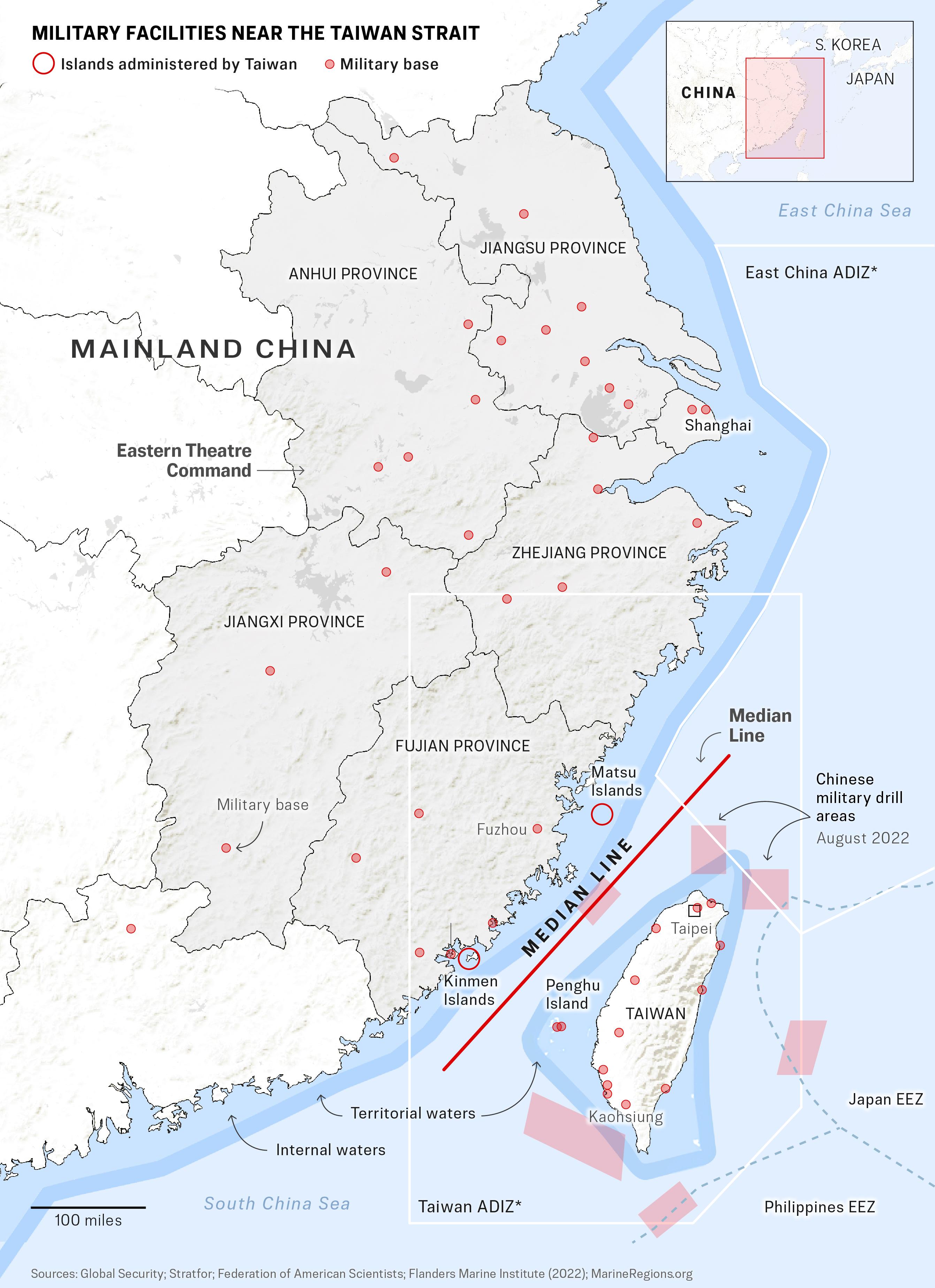
Breaking the 1st and 2nd Island Chains
Another key metric of the CCP’s willingness and technical capacity to challenge the international order militarily is its newfound ability to conduct large-scale operations beyond the first and second island chains.
The two island chains are strategic maritime control lines that have long been central to the U.S. strategy for blunting Chinese power projection and, in the worst case, for fighting another war in the Pacific.
The first island chain extends through a series of archipelagoes from Japan down through Taiwan and the northern Philippines to Borneo and the Malay Peninsula. It forms a natural barrier along China’s coast.
The second island chain lies further east and includes the Bonin and Volcano Islands, Guam, Palau, and the Caroline Islands. It serves as an extended maritime perimeter for U.S. and allied defense strategy, with Guam marking the United States’ westernmost territory.

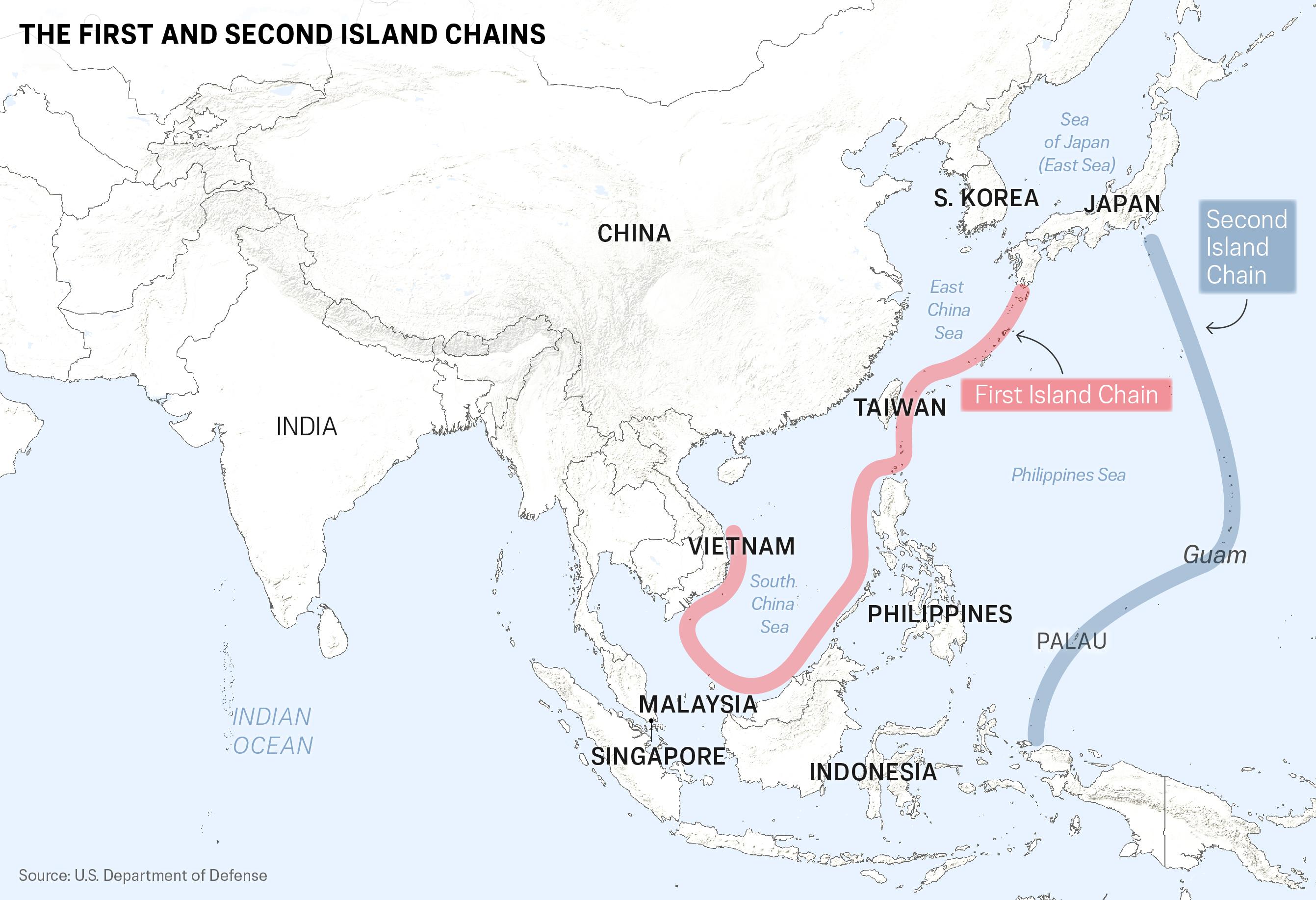
The ability to penetrate both island chains is essential to any effort by the CCP to seriously challenge U.S. power overseas and extend its own military influence.
In early June, the CCP deployed both of its homegrown aircraft carrier groups, the Liaoning and Shandong, into the Western Pacific, beyond the first island chain. It was the first time the PLA had conducted such an exercise.
Both carrier groups conducted flight operations, maritime surveillance, anti-submarine warfare, and simulated strikes, with the Liaoning sailing east of the Philippines.
These dual carrier operations may suggest a push to normalize a persistent Chinese presence beyond the First Island Chain, according to Kessler.
“China has been increasing its blue water presence for several years now,” Kessler said.
“Beijing wants to illustrate that it can operate in multiple zones and domains of warfare to help it project power and influence.”
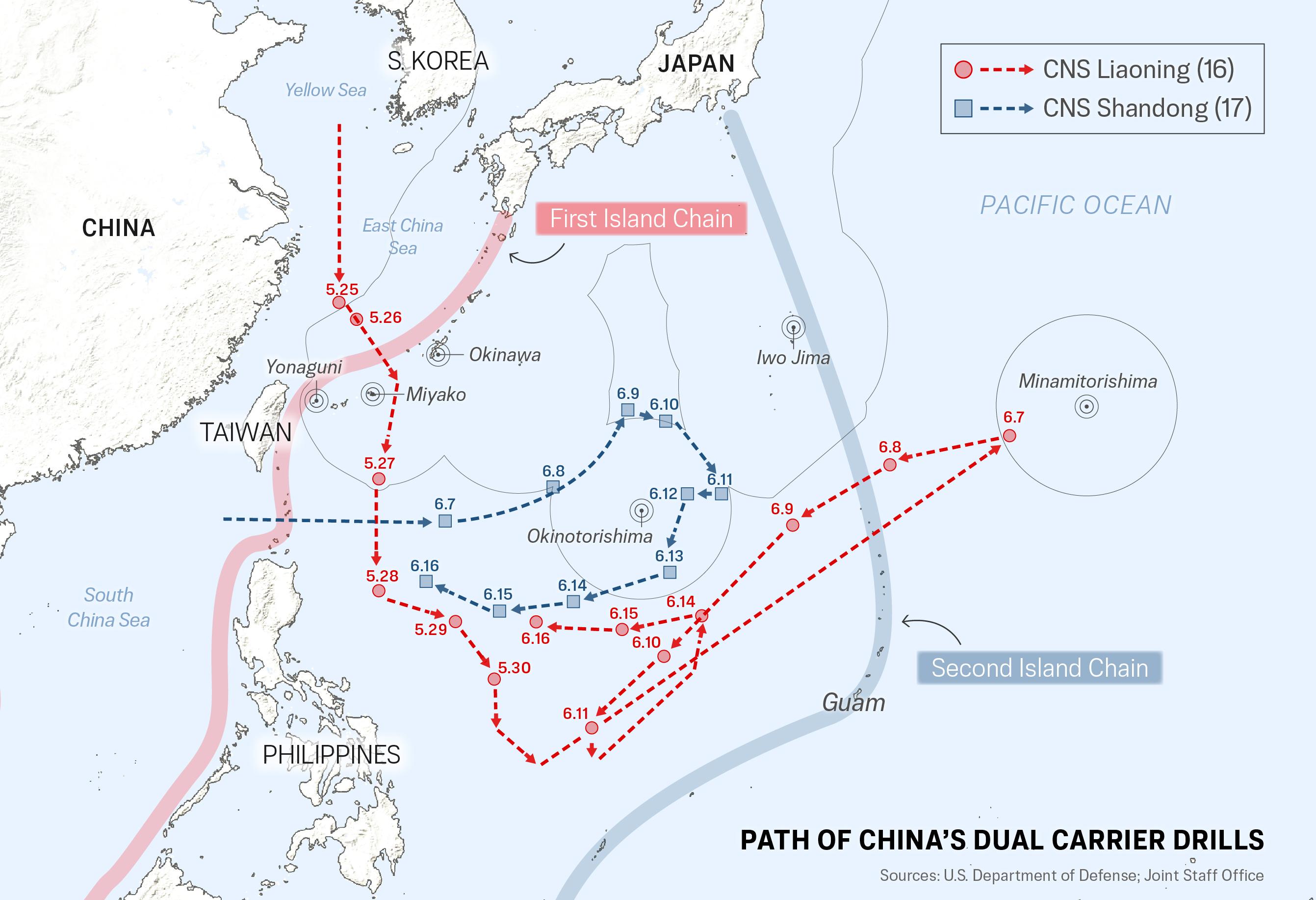
Circumnavigating Australia
Beijing has also extended its military reach around the territories of key U.S. military allies. In February and March, a Chinese naval task force completed a full circumnavigation of Australia.
Designated Task Force 107, the group included the PLA’s advanced Type 055 cruiser, a Type 054A frigate, and a Type 903 oiler.
The operation began on Feb. 11, with the ships maneuvering both separately and in formation through the Coral Sea, where a Royal Australian Navy frigate maintained visual contact. From Feb. 21 to Feb. 22, the task force carried out live-fire drills in international waters, with New Zealand monitoring the exercises.
From Feb. 24, the ships tracked south past Tasmania, entering and then reentering Australia’s exclusive economic zone before moving into the Great Australian Bight. By early March, they rounded Cape Leeuwin and proceeded northward along the west coast, shadowed by Australian frigates. On March 7, the Chinese task force was reported 420 nautical miles south of Christmas Island and was believed to be heading for the Sunda Strait, according to Australian authorities.
The voyage marked a demonstration of the PLA’s extended operations far from its home waters.
The mission served similarly to China’s joint carrier drills, offering both as a signal of the regime’s expanding blue-water capabilities and an exercise in normalizing its presence in maritime zones long dominated by Western navies.
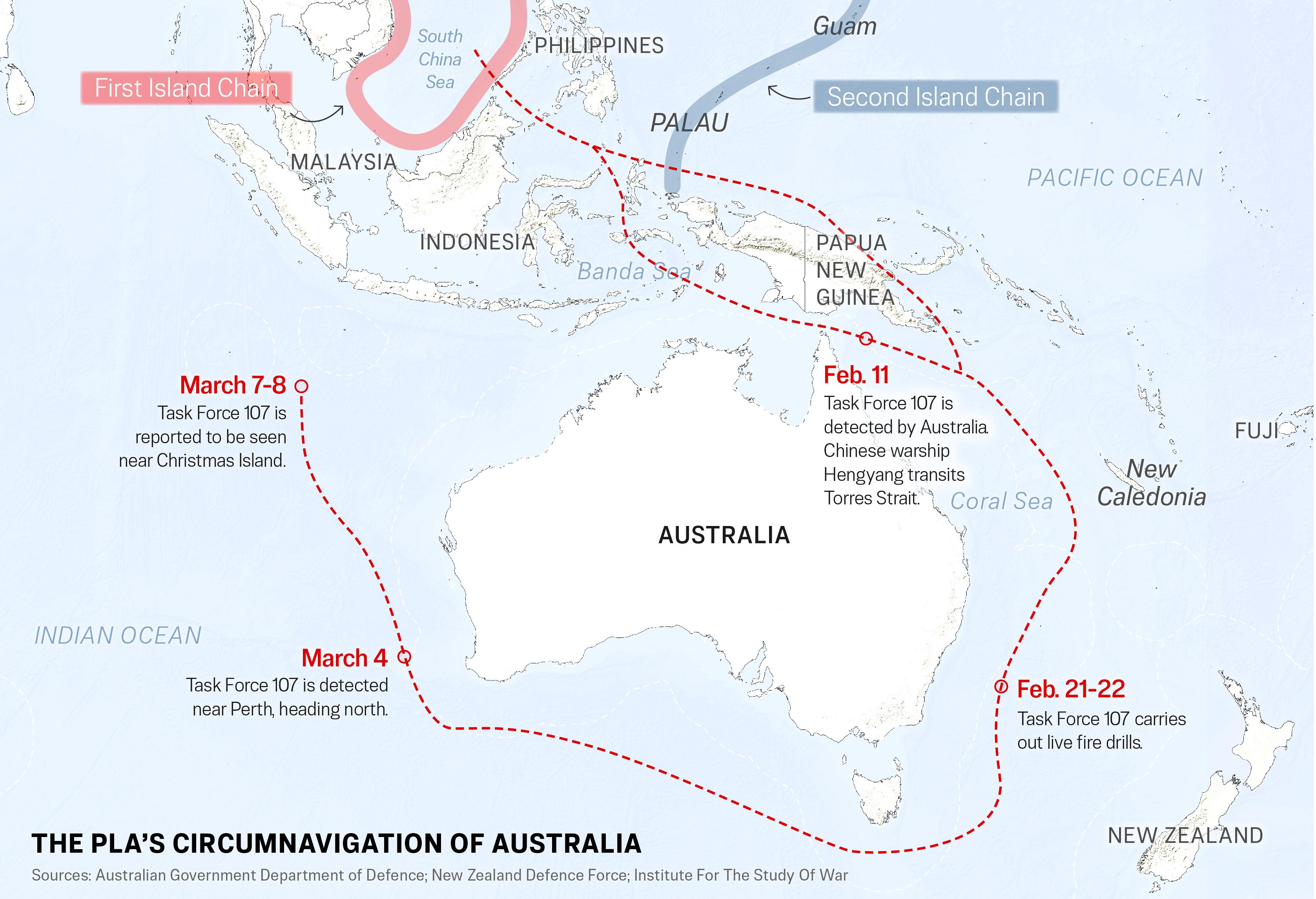
Inroads to the Middle East
China has also worked to expand its military presence in the Middle East, and maintains its only confirmed overseas military base in Djibouti, while also maintaining unofficial ties with Pakistan and the United Arab Emirates (UAE).
The CCP opened the base in Djibouti in August 2017. The heavily fortified facility includes a 1,120-foot pier capable of docking aircraft carriers or nuclear submarines, underground infrastructure, a hospital, a helicopter apron, and a runway, and hosts between 1,000 and 2,000 personnel at any given time.
The base ostensibly supports anti-piracy and humanitarian missions, but also serves as a critical node in Beijing’s overseas intelligence apparatus and lies near strategic chokepoints such as the Bab el-Mandeb Strait and the Suez Canal.
In Pakistan, speculation persists about a potential Chinese military foothold at Gwadar port, where the Chinese state-owned China Overseas Port Holding Company operates. According to a report by Drop Site News, a Washington-based nonprofit investigative news outlet, internal government documents suggest that Islamabad offered Beijing assurances in 2023 that Chinese military assets would be secure at the port, though both governments deny such reports.
The Epoch Times could not independently verify those claims.
Similarly, publicly available sources do not confirm Chinese military facilities in the UAE. Still, U.S. intelligence assessments suggest China may be exploring future logistics or military infrastructure across multiple countries in the region, including the UAE.

Beijing and Abu Dhabi began conducting joint military exercises in 2023, and the Chinese military has inked a 35-year deal for exclusive design rights over a massive shipping facility inside the Khalifa Port. A key player in that effort is the China Harbour Engineering Company, which the United States has sanctioned for building heavily militarized islands for the CCP in the South China Sea.
The port projects are a serious concern for the United States, Kessler said, as they could serve to increase the Chinese regime’s hard and soft power throughout the region.
“The ports can be utilized for both commercial and military purposes,” Kessler said. “It potentially impairs U.S. logistics and [the] ability to move forces in a quick and efficient manner.
“It also creates a diplomatic dilemma in the asymmetrical war if some kind of kinetic altercation between kinetic and non-kinetic forces were to occur.”
Building in Bay of Bengal
The CCP has also deepened its military profile in Southeast Asia and the Indian Ocean, expanding its port infrastructure and naval presence in Cambodia, Sri Lanka, Thailand, and Singapore.
In Cambodia, China’s construction and renovation work at Ream Naval Base has drawn heightened scrutiny. In theory, the base at Ream remains under Cambodian control. Still, satellite imagery and construction of a new Chinese wharf and a separate waterfront complex suggest a more sustained Chinese naval footprint at the northern end of the base, including deep water facilities.
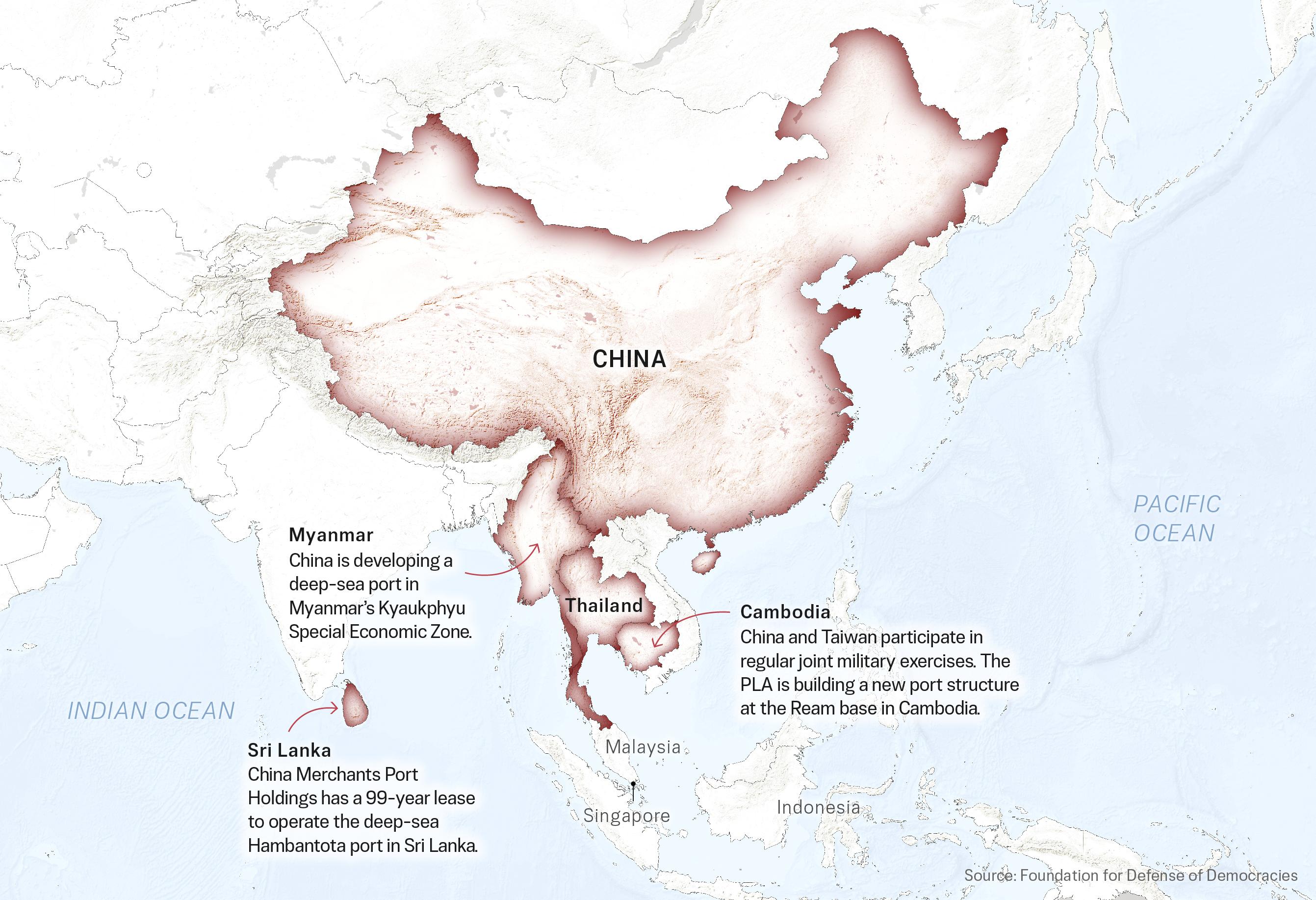
The PLA Navy has also worked closely with the governments of Sri Lanka and Thailand, docking military survey vessels in the former’s ports and conducting blue water military exercises with the latter.
Likewise, the Hong Kong-based China Merchants Port Holdings has signed a 99-year lease to operate the deep-sea Hambantota port in Sri Lanka, granting the CCP extensive access to the region’s port infrastructure without the need for building overt military infrastructure.
Overall, China’s engagements vary by country, from concrete infrastructure build-outs in Cambodia to speculative dual-use activity in Sri Lanka to cooperative exercises in Thailand.
Each effort helps to accelerate the CCP’s campaign to expand its military footprint, Kessler said.
“The Chinese are long-term strategic thinkers, and it shows with the level of ports and shipbuilding capabilities they have acquired and developed in their territories and in other nations [over] the last couple of decades,” Kessler said.
“Beijing is building out the logistical infrastructure that will enable them to maintain a greater overseas or blue water military presence.” |













